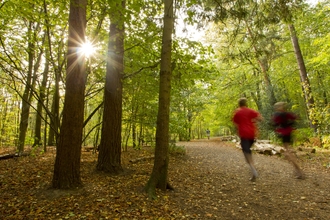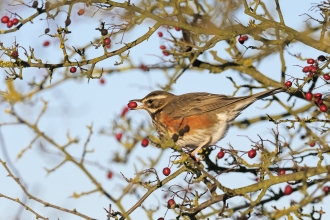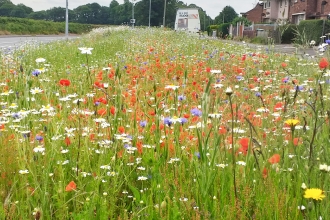Over the past few weeks, North Wales Wildlife Trust have been supporting some of the owners at Big Covert Wood, Denbighshire, with woodland management focussed on restoring this ancient woodland site. Big Covert is classed as a plantation on an ancient woodland site – the habitat is heavily degraded due to the dominance of non-native beech trees but also some non-native conifers such as larch and spruce. These tree species negatively impact the woodland ecosystem by shading out any native broadleaf trees; preventing the regeneration of native flora and fungi and subsequently reducing habitat availability for insects, birds and mammals.
To help us begin the task of gradually removing these non-native trees and setting the woodland on a new positive trajectory, we’ve been assisted since the beginning of February by horse-loggers Derek Jones from Cilcain and Barbara Haddrill – and Barbara’s incredible horses, Tyler and Molly, who travelled up to Maeshafn from Llanrhaeadr-ym-Mochnant in the Tanat Valley. A selective felling licence was obtained from Natural Resources Wales to remove a number of beech trees from the side of the footpath at Coed Cerrig, one of the compartments at the southern end of Big Covert. The gap created will be replanted with mixed native broadleaf trees, mainly oak, but will also allow the natural regeneration of seedlings from the few remnant oak, ash and wych elm growing elsewhere in the wood.
Horses are the preferred method for extracting timber on ancient woodland sites due to their low impact on precious woodland soil, and the beneficial ‘scraping’ effect of their hooves, which breaks up the deep layers of beech leaf litter, allowing light to reach the woodland floor and promoting the regeneration of ancient woodland plants such as wood anemone, lesser celandine, wood sorrel and bluebell.
This woodland management work has been funded through NWWT’s Woodlands for Water Project, which is funded by the Welsh Government and the European Union until June 2022.
If you would like to know more about the project or would like help or advice with woodland creation or management, please contact Jonathan Hulson (Woodlands for Water Project Manager): Jonathan.Hulson@northwaleswildlifetrust.org.uk



